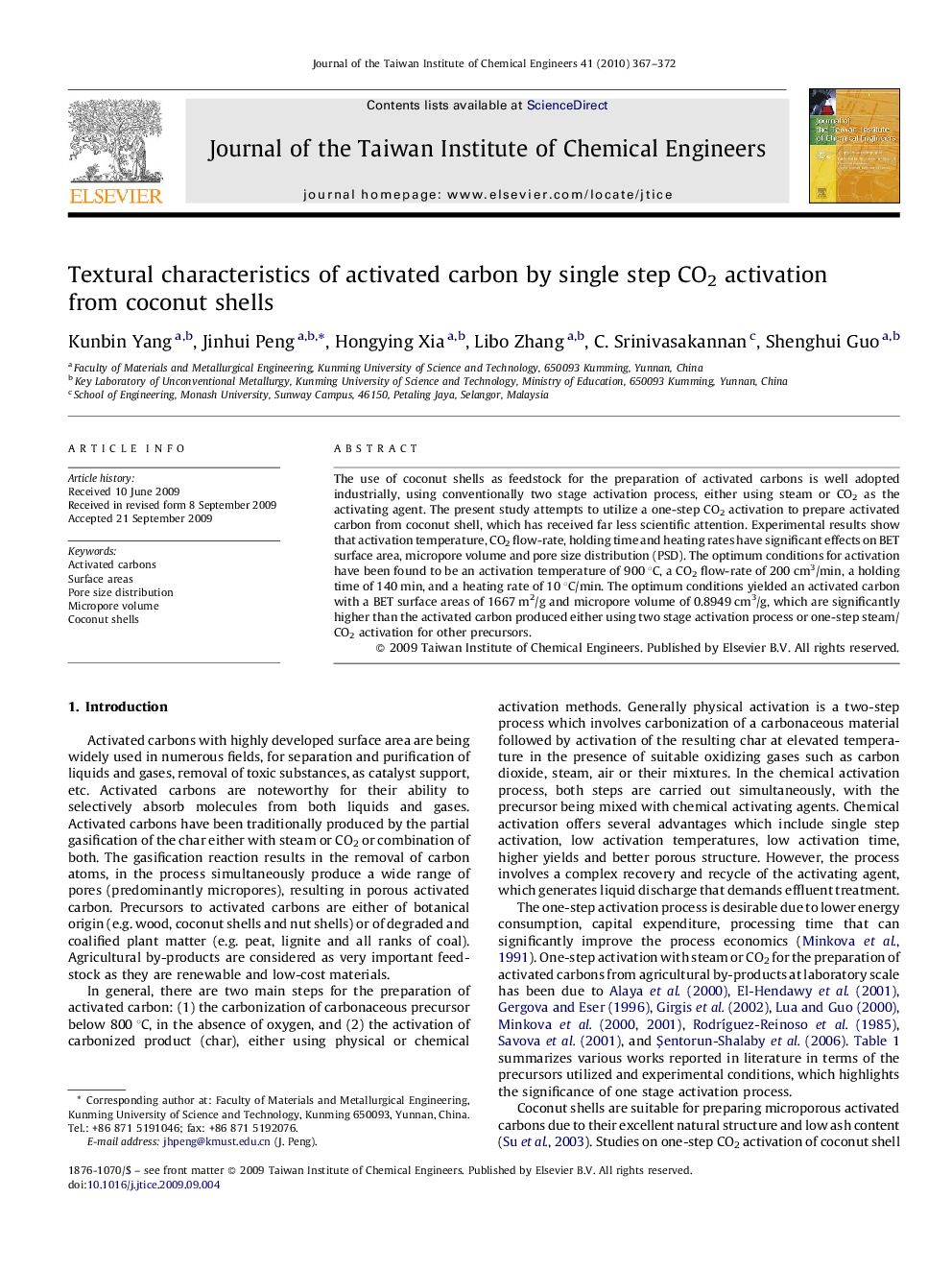| Article ID | Journal | Published Year | Pages | File Type |
|---|---|---|---|---|
| 691928 | Journal of the Taiwan Institute of Chemical Engineers | 2010 | 6 Pages |
The use of coconut shells as feedstock for the preparation of activated carbons is well adopted industrially, using conventionally two stage activation process, either using steam or CO2 as the activating agent. The present study attempts to utilize a one-step CO2 activation to prepare activated carbon from coconut shell, which has received far less scientific attention. Experimental results show that activation temperature, CO2 flow-rate, holding time and heating rates have significant effects on BET surface area, micropore volume and pore size distribution (PSD). The optimum conditions for activation have been found to be an activation temperature of 900 °C, a CO2 flow-rate of 200 cm3/min, a holding time of 140 min, and a heating rate of 10 °C/min. The optimum conditions yielded an activated carbon with a BET surface areas of 1667 m2/g and micropore volume of 0.8949 cm3/g, which are significantly higher than the activated carbon produced either using two stage activation process or one-step steam/CO2 activation for other precursors.
